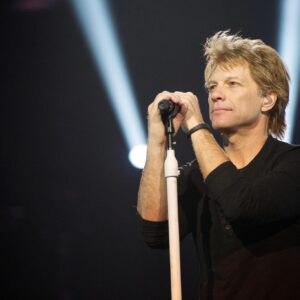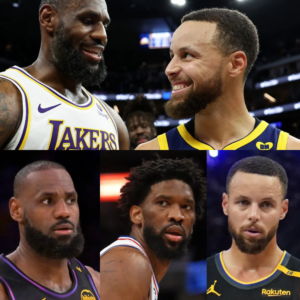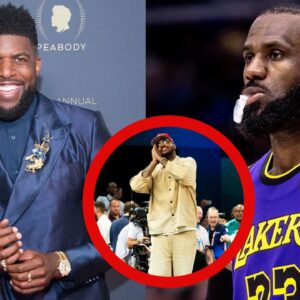Sebastian Bach Feels ‘Like a Piece of S—’ Over Skid Row Situation
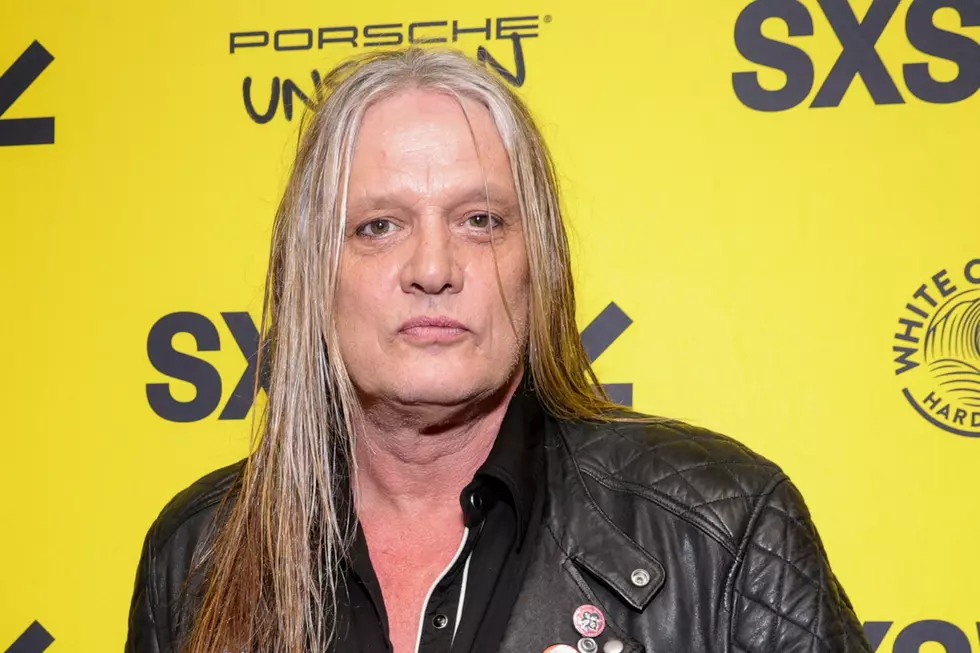
Former Skid Row singer Sebastian Bach has admitted he feels “like a piece of shit” because he’s been unable to reunite with the band.
During a recent conversation with Metal Hammer, Bach opened up about his time with the glam metal group.
“For me, doing three albums with Skid Row, I was just getting started,” the singer admitted. “I didn’t think it would be over and done with so quick.”
In 1996, Bach split from the band following months of mounting tension. Things came to a head when Skid Row was offered the chance to open for Kiss, but the other members turned it down due to scheduling conflicts, greatly angering Bach. The singer exploded at his bandmates, leading to his dismissal.
More recently, Bach has expressed interest in reconvening with his former group. The feeling has not been reciprocated, but the frontman still holds out hope that a reunion could come together.
“I can definitely see that happening considering they play the same songs I play,” he noted. “When I get a substantial royalty check for an album I did with musicians that I haven’t been in the same room with since 1996, I feel like a piece of shit. Because we should be giving something back to the fans that have made this great life possible.”
Is Sebastian Bach Touring?
Meanwhile, Skid Row said goodbye to their most recent singer, Erik Gronwall, who left the group to focus on his health. The band announced that Lzzy Hale will be fronting Skid Row for a handful of dates later this year, however a permanent replacement has not been revealed.
Top 30 Glam Metal Albums

Quiet Riot Metal Health
Pasha
30. Quiet Riot, ‘Metal Health’ (1983)
Bolstered by a smash cover of Slade’s “Cum On Feel the Noize” and its bludgeoning title track, Quiet Riot’s Metal Health became the first metal album to top the Billboard 200, unseating the Police’s Synchronicity in late 1983 and going on to sell more than 6 million copies in the United States. The rest of the album can’t match the epic heights of its singles, but the thrashing “Run for Cover” and bubblegum anthem “Slick Black Cadillac” show how deftly the band could alternate between — or fuse — metal and pop. Quiet Riot crashed and burned shortly after Metal Health, but the album remains a glam metal touchstone that rightfully blew the doors open for countless other bands over the course of the decade.

White Lion Pride
Atlantic
29. White Lion, ‘Pride’ (1987)
It was a tried-and-true formula: Partner a blonde-maned, impossibly beautiful frontman of marginal talent with a reclusive whiz-kid guitarist and watch the money roll in. White Lion milked the blueprint to the tune of 2 million sales on their sophomore album, Pride, a smorgasbord of bubblegum anthems that stretched the term “pop-metal” to its limit without dropping the latter descriptor entirely. The pop plays clearly paid off, scoring White Lion their first and only two Top 10 hits in the rousing “Wait” and the topical ballad “When the Children Cry.” The songwriting on Pride is hardly revelatory, and the record might have languished in the bargain bin if not for Vito Bratta’s dazzling guitar arrangements and solos. “Wait” features some of the the most astonishing two-handed tapping by anyone not named Eddie Van Halen, and Zakk Wylde once praised Bratta as “the only guitarist I’ve heard who sounds cool doing taps.”
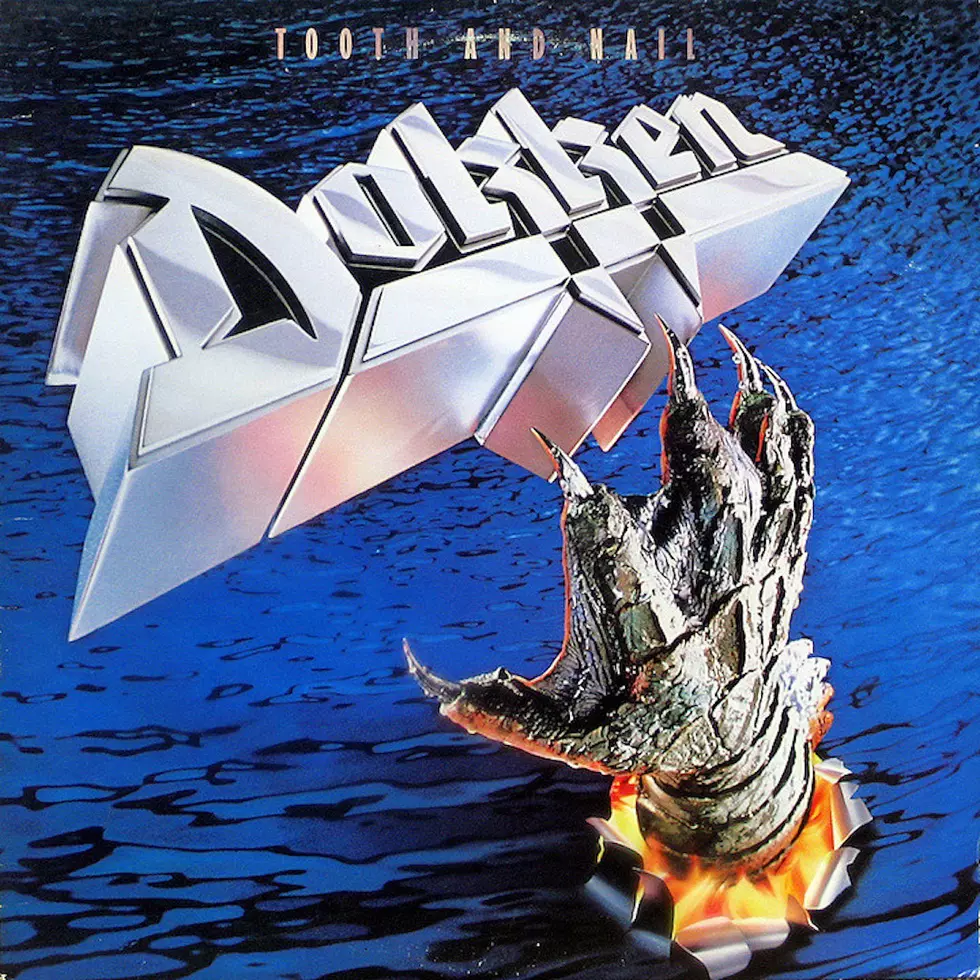
Dokken Tooth and Nail
Elektra
28. Dokken, ‘Tooth and Nail’ (1984)
After their debut album flopped in the States, Dokken’s managers had to beg Elektra Records not to drop them. They parlayed that second chance into their explosive, aptly titled sophomore album, Tooth and Nail. Frontman Don Dokken and guitarist George Lynch might have hated each other too much to work in the studio at the same time, but their musical yin and yang paid off, spawning the moody breakout ballad “Alone Again,” the Def Leppard-esque rocker “Just Got Lucky” and the furious, speed metal title track. Dokken makes the most of his limited vocal range, while Lynch’s volcanic shredding made him one of the hottest guitarists on the Sunset Strip. Dokken would go bigger and poppier on future albums, but they never matched the raw intensity and effortless hooks of Tooth and Nail.

Dangerous Toys
Columbia
27. Dangerous Toys, ‘Dangerous Toys’ (1989)
Dangerous Toys got unfairly lumped in with the rest of the late-‘80s hair metal heap, but the Austin rockers’ eponymous debut owed a greater debt to ZZ Top and Aerosmith than Ratt and Poison. Sleazy blues rave-ups “Take Me Drunk” and “That Dog” dole out sizzling, southern-fried riffs, and frontman Jason McMaster flexes his banshee wail and devilish double entendres on “Teas’n, Pleas’n” and “Sport’n a Woody.” Most importantly, Dangerous Toys delivers a Texas-sized helping of hooks, as best heard on the soaring “Queen of the Nile” and the nightmarishly catchy Alice Cooper tribute “Scared.”

Michael Monroe Not Fakin It
PolyGram
26. Michael Monroe, ‘Not Fakin’ It’ (1989)
For his second solo album, Michael Monroe recruited an all-star cast of musicians including the E Street Band’s Little Steven, prolific session guitarist Phil Grande (Joe Cocker) and former Hanoi Rocks bandmate Nasty Suicide. The result is a raucous glam-punk-’n’-roll hybrid that proves one of the scene’s elder statesmen can still run laps around the new kids on the block. Monroe’s voice has improved dramatically since his early Hanoi Rocks days, and he exudes badassery on lead single “Dead, Jail or Rock ’N’ Roll” (whose video features Axl Rose) and the punky “Shakedown.” “Man With No Eyes” and “Smokescreen” show the singer’s tender side, and the delightfully nonsensical “Love Is Thicker Than Blood” holds up against anything in heavy MTV rotation at the time.

Kiss Lick It Up
Mercury
25. Kiss, ‘Lick It Up’ (1983)
Kiss’ highly publicized makeup removal launched them back into the public eye after years of floundering album sales and ill-conceived disco and pop excursions. But they stayed there because their first makeup-free album, 1983’s Lick It Up, showed they could play ball with the fresh crop of glam metal miscreants who grew up air-guitaring to Destroyer in their bedrooms. The deliciously catchy title track is one of Kiss’ most enduring latter-day hits for good reason, and the Eric Carr-penned “All Hell’s Breakin’ Loose” nailed the rap-rock fusion three years before Aerosmith and Run-D.M.C. remixed “Walk This Way.” The album cuts are killer, too, from metallic thrasher “Gimme More” to sexually supercharged stomper “Not for the Innocent.” Lick It Up granted Kiss their first gold record in three years, and it remains one of the crowning achievements of their unmasked era.

LA Guns debut album
Vertigo
24. L.A. Guns, ‘L.A. Guns’ (1988)
By 1988, the Sunset Strip glam metal scene was saturated with manicured pretty-boys wailing over the same contrived riffs and song-doctored choruses. L.A. Guns dragged the genre back down to the gutter with their deliciously sleazy self-titled debut. Guitarist and namesake Tracii Guns goes scorched-earth on streetwise punk-metal anthems “No Mercy” and “Nothing to Lose,” while singer Phil Lewis howls with sexual bravado and feral aggression on the trashy singles “One More Reason,” “Sex Action” and “Electric Gypsy.” The smoldering ballad “One Way Ticket” hints at the success L.A. Guns would enjoy with “The Ballad of Jayne,” the breakthrough single off their sophomore album, Cocked & Loaded. But they would never rock with the same level of unadulterated fun and fury as they did on L.A. Guns.

WASP debut album
Capitol
23. W.A.S.P., ‘W.A.S.P.’ (1984)
W.A.S.P. may have been forerunners of the burgeoning glam metal movement, but nothing about their self-titled debut was remotely glamorous. While Kiss were extolling the virtues of licking it up and Motley Crue were waxing poetic about the looks that killed, W.A.S.P. frontman Blackie Lawless threatened to “nail your ass to the sheets” and “do whatever I want” in “Animal (Fuck Like a Beast),” which had the honor of making the Parents Music Resource Center’s “Filthy 15” list. The rest of W.A.S.P. is an unrepentant cocktail of sex (“L.O.V.E. Machine”), Satan (“Hellion”) and self-actualization (“I Wanna Be Somebody”), full of forged-in-fire riffs and Lawless’ hellish screams. W.A.S.P. never matched the commercial heights of their pop-metal peers, but in terms of raw intensity, they left them in the dust.

Badlands debut album
Atlantic
22. Badlands, ‘Badlands’ (1989)
Following his ouster from Ozzy Osbourne’s band, guitarist Jake E. Lee recruited former Black Sabbath singer Ray Gillen to form Badlands, a bluesy hard-rock outfit that handily outplayed most of its glam metal peers. Lee and Gillen consummated their partnership on their eponymous debut with electrifying opener “High Wire,” featuring Lee’s kinky, strutting riff and Gillen’s bluesy, Robert Plant-esque screams. “Dreams in the Dark” marks the requisite pop-metal anthem, “Dancing on the Edge” and “Hard Driver” flaunt burly, upbeat blues-metal and “Winter’s Call” swells from a melancholy acoustic ballad into a sensual hard-rock opus. All due respect to the Prince of Darkness, but in Badlands, Lee finally found a group of collaborators who played in his pay grade.

The Cult Sonic Temple
Sire
21. The Cult, ‘Sonic Temple’ (1989)
On 1987’s Electric, the Cult transformed from goth-rock mystics into blue-collar AC/DC acolytes, buoyed by Rick Rubin’s spartan production. They kept the chunky riffs and Morrisonian swagger on 1989’s Sonic Temple, but super-producer Bob Rock gave the album a supersonic sheen that was ever-present on hard-rock radio at the time. Sonic Temple raced to a career-high No. 10 on the Billboard 200, bolstered by soaring metal anthems “Fire Woman” and “Sun King” and the psychedelic ballad “Edie (Ciao Baby).” The rest of the album weds Billy Duffy’s guitar heroics to singer Ian Astbury’s Indigenous spiritual musings, a marriage consummated on the seven-minute epic “Soul Asylum.” Lest they bog listeners down with the heady stuff, the Cult serve up generous helpings of red-hot riffs and sky-high hooks on blues-metal blowouts “New York City,” “Automatic Blues” and “Medicine Train.”

Warrant Cherry Pie
Columbia
20. Warrant, ‘Cherry Pie’ (1990)
“I could shoot myself in the fucking head for writing that song,” Jani Lane lamented about the title track to Warrant’s sophomore album, Cherry Pie. The band planned to call its second LP Uncle Tom’s Cabin and lead with the brooding, hard-rocking track of the same name, but after Columbia Records demanded a catchier single a la “Love in an Elevator,” Lane scribbled out the lyrics to “Cherry Pie” in 15 minutes. Lane may have despised “Cherry Pie,” but he should have given himself more credit for writing a timeless rock anthem in minutes when most bands struggle their whole careers to do so. The rest of Cherry Pie demonstrates Lane’s breadth as a songwriter, from the tense rocker “Mr. Rainmaker” to the heartrending ballad “I Saw Red,” which he wrote after walking in on his girlfriend in bed with his best friend (and which led to a nervous breakdown that delayed the release of Warrant’s debut, Dirty Rotten Filthy Stinking Rich.) And lest anybody forget Warrant’s party-metal principles, the tongue-in-cheek threesome anthem “Love in Stereo” has more hooks and humor than most of the shlock coming off the Sunset Strip at the turn of the decade.

19. Poison, ‘Open Up and Say … Ahh!’ (1988)
Enigma
19. Poison, ‘Open Up and Say … Ahh!’ (1988)
On their sophomore album, Open Up and Say … Ahh!, Poison tightened up their act ever so slightly with help from hard-rock super-producer Tom Werman (Cheap Trick, Motley Crue, Twisted Sister) and delivered their most consistently catchy batch of songs to date. “Nothin’ but a Good Time” and “Fallen Angel” were tailor-made for the arenas Poison were now filling, “Your Mama Don’t Dance” was the best glam metal cover since Motley Crue’s “Smokin’ in the Boys Room,” and the archetypal power ballad “Every Rose Has Its Thorn” took Harlan Howard’s “three chords and the truth” motto to its logical conclusion. Even album cuts like “Love on the Rocks” and “Back to the Rocking Horse” rocked respectably, a major victory in the hits-and-filler era. And to understand the abject absurdity of the decade’s crusading parental groups, look no further than the censored Open Up cover, which edits out model Bambi’s scandalous tongue.

Bon Jovi New Jersey
Mercury
18. Bon Jovi, ‘New Jersey’ (1988)
After Slippery When Wet catapulted them into the hard-rock stratosphere, Bon Jovi did what any smart, newly minted superstars would do: They replicated their breakthrough album, almost song for song, on their follow-up, New Jersey. Thunderous album opener “Lay Your Hands on Me” evokes “Let It Rock”; “Bad Medicine” fine-tunes the sleazy bombast of “You Give Love a Bad Name”; “I’ll Be There for You” is twice as catchy and half as cheesy as “Never Say Goodbye”; and “Born to Be My Baby” splits the difference between working-class love anthems “I’d Die for You” and “Livin’ on a Prayer.” Not every punch lands: “Living in Sin” is a plodding, clumsy rebuke of purity culture, and the labored “Stick to Your Guns” tries to recreate the rock ‘n’ roll outlaw vibe of “Wanted Dead or Alive” with diminishing returns. Still, New Jersey has enough ironclad hits and moments of genuine grandeur (like the Springsteen-lite boyhood anthem “Blood on Blood” and the scorching blues-rocker “Homebound Train”) to stand up to its predecessor. It sold 7 million copies in the U.S. and spawned five Top 10 hits, the most for any hard-rock album, proving Bon Jovi’s hot streak was far from finished.

Def Leppard Hysteria
Mercury
17. Def Leppard, ‘Hysteria’ (1987)
Some critics and old-school Def Leppard fans considered Hysteria‘s chintzy guitars, cavity-inducing choruses and infinitely multitracked vocal harmonies to be rock ‘n’ roll anathema, and a complete betrayal of everything that made the quintet one of the best bands to emerge from the NWOBHM movement. But those perceived faults also made it one of the biggest and most celebrated albums in rock history. Teaming up once again with producer Robert John “Mutt” Lange, Def Leppard succeeded in their goal of crafting the hard-rock Thriller, a state-of-the-art sonic marvel that spawned seven singles, including the perennial strip-club anthem “Pour Some Sugar on Me” and the chart-topping ballad “Love Bites,” the band’s only trip to No. 1. Love them or hate them, every song on Hysteria is meticulously engineered to stick in your brain, which propelled it to 12 million copies sold in the U.S. alone. Hysteria was a cornerstone of ‘80s rock and, along with Bon Jovi’s Slippery When Wet and Motley Crue’s Shout at the Devil, helped define an entire musical movement.

Poison Look What the Cat Dragged In
Enigma
16. Poison, ‘Look What the Cat Dragged In’ (1986)
Every negative glam metal stereotype can be traced back to Poison’s debut album, Look What the Cat Dragged In. The Mechanicsburg, Penn., quartet took the genre’s aesthetic to outlandish extremes, as evidenced by their androgynous album cover portraits and Day-Glo jungle-gym music-video sets. Poison recorded Look What the Cat Dragged In for a measly $23,000, and it shows: The production is amateurish and the band members can barely play their instruments. But none of that matters because the songs are so damn catchy. “Cry Tough,” “I Want Action,” “Look What the Cat Dragged In” and “Talk Dirty to Me” are delicious, empty-calorie rockers; “I Won’t Forget You” is a plaintive ballad devoid of pretense; and “Blame It on You” and “#1 Bad Boy” are disastrous Aerosmith rip-offs that nevertheless succeed because Poison are so adorably clueless that they’re punching above their weight. On Look What the Cat Dragged In, Poison accomplished their “fun at all costs” MO and became Sunset Strip kingpins, buying themselves a few more years to learn how to be musicians.

Ratt Out of the Cellar
Atlantic
15. Ratt, ‘Out of the Cellar’ (1984)
If one moment consummated glam metal’s thrust into the mainstream, it was Ratt guitarist Warren DeMartini crashing through a snooty family’s attic and ripping a guitar solo atop their dining room table as they looked on in disgust in the “Round and Round” video. The single raced up the charts and propelled its accompanying album, Out of the Cellar, to triple-platinum status, making Ratt leaders of the glam metal revolution. The L.A. quintet’s debut album combines the sleazy glamour of Motley Crue, the muscular riffing of Aerosmith and the twin-lead guitar attack of Judas Priest, all given a punchy, radio-ready sheen by star producer-in-the-making Beau Hill. Singer Stephen Pearcy sneers and snarls on “Lack of Communication” and “In Your Direction,” while DeMartini and Robbin Crosby set their fretboards alight on “Wanted Man” and “Back for More.” Ratt would never match the quality or success of Out of the Cellar, but in 1984, they were the hottest stars on the Sunset Strip.

Warrant Dog Eat Dog
Columbia
14. Warrant, ‘Dog Eat Dog’ (1992)
Like virtually every other band from the glam metal era, Warrant were a casualty of the grunge revolution, but they went down swinging with their heaviest album to date, Dog Eat Dog. The lecherous hard-rock anthems are still present, from the slinky, riff-heavy “Machine Gun” to the mid-tempo stomper “Bonfire.” But Jani Lane gets introspective on the ambitious ballad “The Bitter Pill” and prophetic on the post-apocalyptic lament “April 2031.” The singer seemed to hint at his own inner torment on “All My Bridges Are Burning,” a deceptively up-tempo tale of a strung-out scenester named Jimmy. And on the exhilarating speed-metal exercise “Inside Out,” Warrant proved they could out-rock nearly every grunge and metal up-and-comer who rendered them obsolete. It’s a tragedy so few people cared to find out.

Bangkok Shocks, Saigon Shakes, Hanoi Rocks
Johanna Kustannus
13. Hanoi Rocks, ‘Bangkok Shocks, Saigon Shakes, Hanoi Rocks’ (1981)
While most early-’80s Sunset Strip bands were busy aping Eddie Van Halen’s dive-bomb squeals and David Lee Roth’s wanton shrieks, Finland’s Hanoi Rocks were taking cues from the New York Dolls and Mott the Hoople on their raucous, glam-punk debut, Bangkok Shocks, Saigon Shakes, Hanoi Rocks. The five still-teenagers play with reckless abandon, and fizzy punk-pop rockets like “Stop Cryin’” and “Lost in the City” exude youthful naivete. Lead single “Tragedy” is full of lean riffs and indelible falsetto backup vocals, while the punky power ballad “Don’t Never Leave Me” proves the band knew its way around a pop hook. Hanoi Rocks’ androgynous looks and gutter-glam hooks influenced the likes of Guns N’ Roses, Ratt, L.A. Guns and Poison, and on Bangkok Shocks, Saigon Shakes, Hanoi Rocks, they began shaping the sound and aesthetic of the decade to follow.

Cinderella Long Cold Winter
Mercury
12. Cinderella, ‘Long Cold Winter’ (1988)
Long Cold Winter established Cinderella frontman Tom Keifer as a singular songwriting talent, fleshing out the pretty-boy pop-metal of the band’s debut, Night Songs, with bluesy slide guitars and Stonesy swagger. The album distinguishes itself immediately with acoustic opener “Bad Seamstress Blues,” followed by the one-two punch of arena-ready anthems “Fallin’ Apart at the Seams” and “Gypsy Road.” The breakout hit this time around is “Don’t Know What You Got (Till It’s Gone),” a tender piano ballad that outclasses its Night Songs predecessor, “Nobody’s Fool.” But it pales in comparison to “Coming Home,” an aching, up-tempo ballad about the rigors of the road that would put smiles on Mick and Keef’s faces. Elsewhere, the smoldering title track appropriates Led Zeppelin’s “Since I’ve Been Loving You” with gusto, and the metal-edged “Second Wind” matches the tough-guy posturing of Cinderella’s Sunset Strip peers.

Motley Crue Dr Feelgood
Elektra
11. Motley Crue, ‘Dr. Feelgood’ (1989)
Nikki Sixx’s 1987 heroin overdose provided the impetus for the members of Motley Crue to get sober. The legendarily debauched rockers emerged clean, lean and not-so-mean on 1989’s Dr. Feelgood, their first and only album to top the Billboard 200. It’s easy to see why: Among the sinister title track, the turbocharged “Kickstart My Heart” (allegedly inspired by Sixx’s near-death experience), the doe-eyed ballad “Without You” and the tongue-in-cheek pop-metal knockouts “Don’t Go Away Mad (Just Go Away)” and “Same Ol’ Situation (S.O.S.),” Dr. Feelgood is practically its own greatest hits compilation. With drugs out of the picture, Motley Crue turned to their other muse: sex, which they extol and explore from every angle on deliciously sleazy album cuts “Slice of Your Pie,” “Rattlesnake Shake” and “She Goes Down.” Producer Bob Rock optimizes the record to explode from speakers like a Michael Bay movie, making Dr. Feelgood Motley Crue’s best-sounding album by a long shot, as well as one of their strongest batch of tunes.

Warrant Dirty Rotten Filthy Stinking Rich
Columbia
10. Warrant, ‘Dirty Rotten Filthy Stinking Rich’ (1989)
Warrant earn no points for originality on their debut album, but their ironclad songwriting and steadfast commitment to having fun compensate for the myriad cliches on Dirty Rotten Filthy Stinking Rich. “32 Pennies,” “Down Boys” and “Big Talk” are effortlessly catchy pop-metal anthems full of beefy riffs and nimble solos (courtesy of session guitarist Mike Slamer), while “Sometimes She Cries” and “Heaven” contained the soaring choruses to propel them up the charts and onto arena stages. Jani Lane sells even the most contrived material with his powerhouse vocals, and he skewers the inherent shallowness of the genre in the tongue-in-cheek title track. Lane would further establish himself as one of the glam metal era’s best songwriters on future Warrant albums, but he had already begun to distinguish himself on DRFSR.

Whitesnake
Geffen
9. Whitesnake, ‘Whitesnake’ (1987)
After slogging it out for nearly a decade to middling success, David Coverdale was ready to shutter Whitesnake after drummer Cozy Powell left the group in 1985. Convinced by Geffen Records to keep working with guitarist John Sykes, who played on the remixed U.S. version of 1984’s Slide It In, Coverdale and his band ventured to Vancouver’s Little Mountain Sound Studios (home of hard-rock producers du jour Bruce Fairbairn and Bob Rock) to begin work on their next album. Their persistence paid off. Whitesnake is a towering inferno of six-string histrionics and sensuous vocals, synthesizing the titanic hard rock of the ‘70s and the slick pop-metal dominating airwaves in 1987. Coverdale courts the U.S. pop market on the gigantic ballads “Here I Go Again” and “Is This Love,” which peaked at Nos. 1 and 2 on the Billboard Hot 100, respectively. But it’s the rockers that make Whitesnake a gem, from the speed-demon riffing of “Bad Boys” to the sultry blues epic “Crying in the Rain.” And on “Still of the Night,” Whitesnake transcend all the pesky Led Zeppelin comparisons to craft a timeless hard-rock masterpiece all their own.

Extreme II Pornograffitti
A&M
8. Extreme, ‘Extreme II: Pornograffitti’ (1990)
Extreme built upon the rote glam metal of their self-titled debut for its masterful follow-up, Extreme II: Pornograffitti. The “Funked-Up Fairy Tale” found the Boston rockers waxing philosophical about the allure and perils of sex, drugs and money, second-guessing the American Dream and yearning to find some truth and compassion in a corrupt world. The tender, deceptively complex acoustic ballads “More Than Words” and “Hole Hearted” catapulted Pornograffiti to double-platinum status, but it holds up today due to its jaw-dropping hard rockers. “Decadence Dance” and “It (’s a Monster)” are supersonic funk-metal flexes, while “Li’l Jack Horny” and “When I’m President” pack walloping grooves and zesty horn blasts. Frontman Gary Cherone delivers spicy social commentary with bravado, while guitarist Nuno Bettencourt dazzles with his tremolo picking, multi-string tapping and whammy-bar flutters. “If that doesn’t bring tears to your eyes as a guitarist, I don’t know where things are,” Brian May raved about the “Get the Funk Out” solo. “I could never do that.”

David Lee Roth Eat Em and Smile
Warner Bros.
7. David Lee Roth, ‘Eat ‘Em and Smile’ (1986)
Following his acrimonious split from Van Halen after the smash success of 1984, David Lee Roth set out to beat his former bandmates at their own game by assembling an all-star backing band comprising guitarist Steve Vai, bassist Billy Sheehan and drummer Gregg Bissonette for his full-length solo debut, Eat ‘Em and Smile. It worked. From the strutting opener “Yankee Rose” (probably the most successful song ever written about wanting to have sex with the Statue of Liberty), Eat ‘Em and Smile is off to the races, with Diamond Dave squealing, howling and drawling over scorched-earth metal showcases (“Shyboy,” “Elephant Gun”) and weekend warrior pop-rock anthems (“Goin’ Crazy”). He spins a surrealistic tale on the simmering “Big Trouble” and leers like a lounge fly on the mesmerizing “Ladies’ Nite in Buffalo?,” the best and boldest song to come from any Van Halen alum since 1984. Hell hath no fury like a frontman scorned.

Def Leppard Pyromania
Mercury
6. Def Leppard, ‘Pyromania’ (1983)
On their first two albums, 1979’s On Through the Night and 1981’s High ’n’ Dry, Def Leppard were content to rack up modest sales by cranking out AC/DC, UFO and Thin Lizzy worship. But on their third album, 1983’s Pyromania, the former NWOBHM heavyweights pierced the pop mainstream with help from producer Mutt Lange, who also manned the boards on High ’n’ Dry. Together, the band and producer crafted a set of slick, hi-fi rockers ornamented with poppy synthesizers and towering vocal harmonies. Airtight arena anthems “Photograph” and “Rock of Ages” soared to the top of the Billboard rock charts, while moody, mid-tempo rockers “Foolin’” and “Too Late for Love” presaged Lep’s full-fledged pop reinvention on Hysteria. On Pyromania, Def Leppard expertly straddled the hard-rock and pop worlds, laying the groundwork for their world domination and inspiring a wave of copycats.

5. Bon Jovi, ‘Slippery When Wet’ (1986)
Mercury
5. Bon Jovi, ‘Slippery When Wet’ (1986)
On their career- and era-defining breakthrough album, Slippery When Wet, Bon Jovi went from a rock band vying for the pop charts to bona fide pop stars masquerading as rockers, dolling up their supersized hooks with crunchy guitar riffs and booming drums. Chart-topping singles “You Give Love a Bad Name” and “Livin’ on a Prayer” have reached vaunted “karaoke staple” status, while “Wanted Dead or Alive” perfected the rock ’n’ roll outlaw persona that countless bands would try to replicate throughout the second half of the decade — Bon Jovi included. But it’s the album cuts that make Slippery When Wet a TKO, from the funky, big-horn strut of “Social Disease” to the global, rah-rah stadium anthem “Raise Your Hands.” Even the so-called “heavy” songs bookending the album, “Let It Rock” and “Wild in the Streets,” muster all the menace of Ralph Macchio in The Outsiders. Bon Jovi’s family-friendly approach to heavy metal resulted in a batch of songs that sound equally at home blasting from arenas, football stadiums, mall food courts or high school gymnasiums. No matter the venue, you can be sure they’re still blasting today.

Aerosmith Pump
Geffen
4. Aerosmith, ‘Pump’ (1989)
“The difference between us old farts and the younger bands,” Steven Tyler said in The Making of Pump, “is that the younger bands are into jerking off and we’re into fucking.” If Permanent Vacation rejuvenated Aerosmith’s career and pitted them against the new glam metal class, Pump proved the elder statesmen of sleaze could still wipe the floor with their poufy-haired progeny. From the pile-driving one-two punch of “Young Lust” and “F.I.N.E.” to the rugged power ballad “What It Takes,” Pump is a whip-smart tour de force of monolithic riffs, soaring choruses and state-of-the-art production. Song doctor Desmond Child teases the band’s indelible hooks to the heavens, and producer Bruce Fairbairn augments pop-metal hits like “Love in an Elevator” and “The Other Side” with blustery horn arrangements that don’t jeopardize the integrity of the songs. The album’s crown jewel, though, is Tyler’s haunting ballad “Janie’s Got a Gun,” which contains the most poignant social commentary and mesmerizing sonic flourishes of the band’s career. Not only is Pump a high-water mark of the glam metal era, it stands toe to toe against Aerosmith’s undisputed mid-‘70s classics, Toys in the Attic and Rocks.

3. Motley Crue, ‘Shout at the Devil’ (1983)
Elektra
3. Motley Crue, ‘Shout at the Devil’ (1983)
The original, black-on-black pentagram cover said it all. On their 1983 sophomore LP, Shout at the Devil, Motley Crue took all the elements of their scrappy 1981 debut, Too Fast for Love, and made them bigger, darker and more debauched. The muscular riffs and massive hooks of “Looks That Kill” gave Motley Crue their first taste of mainstream chart success, while the swaggering dark-pop opus “Too Young to Fall in Love” demonstrated Nikki Sixx’s penchant for sticky, earworm choruses. “Bastard” and “Red Hot” thrashed with raw fury, while the bloodstained manifesto “Knock ‘Em Dead, Kid” proved you could take the band out of the gutter, but you couldn’t take the gutter out of the band. Factor in the band’s iconic leather-and-codpiece uniforms, and Shout at the Devil became a cornerstone of ‘80s heavy metal in terms of both sound and appearance. It also marked the last time Motley Crue would rock with such bloodthirsty clarity before falling prey to addiction, personal tragedy and the very pop-metal cliches they helped popularize.

Skid Row debut album
Atlantic
2. Skid Row, ‘Skid Row’ (1989)
Skid Row emerged at the tail end of the glam metal zeitgeist, but they made up for lost time with their masterful 1989 self-titled debut. Guitarists Dave “Snake” Sabo and Scotti Hill plumb a bottomless well of thunderous riffs and harmonic squeals on “Big Guns,” “Here I Am” and “Midnight / Tornado,” and megawatt frontman Sebastian Bach wrings the utmost drama out of every note he sings, imbuing rebel-without-a-cause anthems “Youth Gone Wild” and “18 and Life” with a palpable sense of danger. The coup de grace comes in the explosive power ballad “I Remember You,” when Bach pierces the heavens with a show-stopping, melismatic “yyyyyoooouuuuu-oooohhhh-yyyeeeaaahhh!” Skid Row crossed over to full-fledged heavy metal on 1991’s Slave to the Grind, but their eponymous debut remains a stone-cold glam metal classic.

Motley Crue Too Fast for Love
Leathur
1. Motley Crue, ‘Too Fast for Love’ (1981)
This is where it all began. In 1981, four scrawny, headstrong, piss-broke street urchins shacked up in a squalid, two-bedroom apartment around the corner from the Sunset Strip and set out on their quest to change the face of heavy metal at the onset of the decade. Soon, Motley Crue had developed a reputation as the baddest bottom-feeders on the Strip, packing venerated clubs like the Whisky a Go Go and the Starwood. They scraped together what little money they had and entered the studio with engineer and former Accept guitarist Michael Wagener to bang out their debut album in “three drunken days,” as bassist Nikki Sixx put it in the band’s sordid tell-all, The Dirt. The resulting Too Fast for Love, which the band released on its own Leathur Records, is a feral blast of punk-metal that combines the bombastic hard rock of Kiss and Van Halen, the sloppy glam-punk of the New York Dolls and the fizzy power-pop of Cheap Trick and the Raspberries. “Live Wire” and “Come On and Dance” crackle with Mick Mars’ grimy guitar riffs, while Vince Neil puffs up like a bleach-blonde peacock on “Take Me to the Top” and “Piece of Your Action.” Sixx builds his own mythology on “On With the Show,” an autobiographical tale about “killing” his birth name, Frank Feranna Jr., and being reborn as the depraved, jet-setting rock star fans know and love today. Motley Crue’s debut doubles as their best release and the definitive album of the glam metal era. All roads lead back to Too Fast for Love.
News
Queen Beyonce In A See-through Lace Dress And Cowboy Hat With Her Husband Jay Z Attended The Event
Queen Beyonce In A See-through Lace Dress And Cowboy Hat With Her Husband Jay Z Attended The Event Queen Beyoncé, the legendary singer and global icon, made…
“David Bryan of Bon Jovi Stuns Audience with Unforgettable Surprise Performance”
“David Bryan of Bon Jovi Stuns Audience with Unforgettable Surprise Performance” Bon Jovi keyboardist David Bryan gave an “unforgettable” performance when he spontaneously took over the piano…
Jon Bon Jovi Hits the Town, and Gustavo Dudamel Takes the Stage
Jon Bon Jovi Hits the Town, and Gustavo Dudamel Takes the Stage This week, fans turned out for a new documentary about Jon Bon Jovi and took…
Jon Bon Jovi, 62, on New Documentary: ‘It’s Each of Our Individual Truths’
Jon Bon Jovi, 62, on New Documentary: ‘It’s Each of Our Individual Truths’ New Hulu series addresses Bon Jovi’s voice issues and Richie Sambora’s departure David Bergman/Hulu…
Archiving the Legacy: A Glimpse into Bon Jovi’s Wardrobe Vault( VIDEO)
Archiving the Legacy: A Glimpse into Bon Jovi’s Wardrobe Vault( VIDEO) Step into a room frozen in time, untouched by the passage of years, a sanctuary housing…
Madonna’s Spectacular Concert Set to Ignite Copacabana Beach
Madonna’s Spectacular Concert Set to Ignite Copacabana Beach In less than 20 hours, the eagerly anticipated concert by Madonna, set to draw over 1 million fans, will…
End of content
No more pages to load



